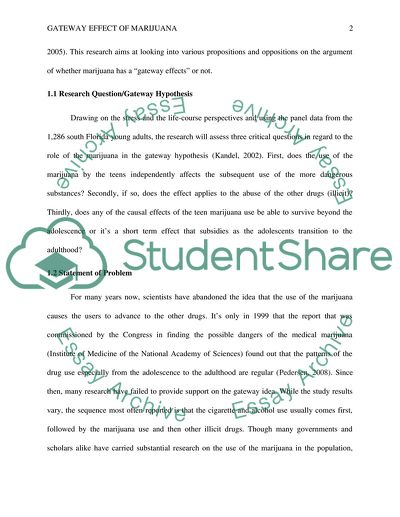Cite this document
(Is Marijuana the Gateway for Cocaine and Heroin or Not Research Paper, n.d.)
Is Marijuana the Gateway for Cocaine and Heroin or Not Research Paper. Retrieved from https://studentshare.org/health-sciences-medicine/1878240-is-marijuana-a-gateway-drug-amongst-teenagers-what-percentage-of-teenagers-go-onto-use-other-drugs
Is Marijuana the Gateway for Cocaine and Heroin or Not Research Paper. Retrieved from https://studentshare.org/health-sciences-medicine/1878240-is-marijuana-a-gateway-drug-amongst-teenagers-what-percentage-of-teenagers-go-onto-use-other-drugs
(Is Marijuana the Gateway for Cocaine and Heroin or Not Research Paper)
Is Marijuana the Gateway for Cocaine and Heroin or Not Research Paper. https://studentshare.org/health-sciences-medicine/1878240-is-marijuana-a-gateway-drug-amongst-teenagers-what-percentage-of-teenagers-go-onto-use-other-drugs.
Is Marijuana the Gateway for Cocaine and Heroin or Not Research Paper. https://studentshare.org/health-sciences-medicine/1878240-is-marijuana-a-gateway-drug-amongst-teenagers-what-percentage-of-teenagers-go-onto-use-other-drugs.
“Is Marijuana the Gateway for Cocaine and Heroin or Not Research Paper”, n.d. https://studentshare.org/health-sciences-medicine/1878240-is-marijuana-a-gateway-drug-amongst-teenagers-what-percentage-of-teenagers-go-onto-use-other-drugs.


